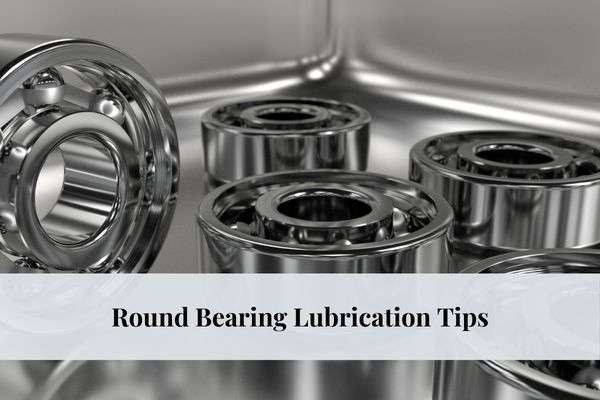
Proper lubrication is essential for the efficient operation and longevity of round bearings, critical components in a wide range of machinery and equipment. From industrial machines to automotive applications, round bearings facilitate smooth movement, reduce friction, and support loads. Understanding how to lubricate these bearings correctly is crucial to ensuring they function optimally. This comprehensive guide provides detailed tips and insights into the lubrication of round bearings, helping you maintain peak performance and prevent unnecessary downtime.
Round bearings come in various types, each designed for specific applications. The most common types include ball, roller, and spherical bearings. Ball bearings are ideal for low friction and high-speed applications, while roller bearings are suited for heavier loads and slower speeds. Spherical bearings can accommodate misalignment and are often used in applications where movement occurs at different angles.
Lubrication plays a vital role in reducing friction and wear in round bearings. It creates a thin film between the moving parts, preventing direct metal-to-metal contact. This extends the bearing's lifespan and improves efficiency by minimizing energy loss due to friction. Additionally, lubrication helps dissipate heat generated during operation and protects against contaminants and corrosion.
The choice of lubricant depends on the bearing type and operating conditions. Grease and oil are the two primary types of lubricants used for round bearings. Grease is preferred for applications where the lubricant needs to stay in place and provide a long-lasting protective layer. Oil is better suited for high-speed applications where heat dissipation is critical. Solid lubricants or pastes may sometimes be used for extreme conditions.
When selecting a lubricant, consider factors such as temperature range, load capacity, speed, and environmental conditions. The lubricant's viscosity is also crucial; it should be low enough to allow easy flow and high enough to maintain a protective film. Choose a lubricant with high thermal stability for high-temperature applications to prevent degradation.
Manual lubrication involves applying lubricant directly to the bearing using a grease gun or oil can. This method is suitable for small machines or equipment with easily accessible bearings. It's essential to follow the manufacturer's recommendations for the correct type and amount of lubricant to use. Over-lubrication can cause excess heat and damage, while under-lubrication can lead to increased wear.
Automatic lubrication systems provide a consistent supply of lubricant to bearings, reducing the risk of human error and ensuring optimal performance. These systems are ideal for large-scale operations or equipment with hard-to-reach bearings. They can be programmed to deliver precise amounts of lubricant at regular intervals, extending bearing life and reducing maintenance costs.
Applying too much lubricant can lead to increased friction, heat, and potential leakage. Over-lubrication can also cause the lubricant to break down more quickly, reducing effectiveness. To prevent these issues, it's important to adhere to recommended lubrication schedules and quantities.
Insufficient lubrication can increase friction and wear, leading to premature bearing failure. Regularly check and maintain lubricant levels to ensure adequate protection. Monitoring lubricant conditions and scheduling routine maintenance can help prevent under-lubrication.
Regularly inspect and maintain lubrication systems to ensure they function correctly. Check for signs of wear, leaks, or contamination, and promptly replace worn or damaged components. Keeping the system clean and debris-free will prevent contamination and ensure efficient operation.
Monitor the condition of the lubricant by checking for changes in color, texture, or viscosity. Contaminated or degraded lubricant should be replaced immediately to maintain bearing performance. A routine monitoring schedule will help identify potential issues early and prevent costly repairs.
Temperature can significantly impact the effectiveness of a lubricant. High temperatures can cause the lubricant to degrade, while low temperatures can increase its viscosity, reducing its ability to flow. Choose a lubricant with a suitable temperature range for your application, and consider installing temperature control systems if necessary.
Contaminants such as dust, dirt, and moisture can compromise the integrity of the lubricant and reduce bearing performance. Ensure proper sealing and filtering systems are in place to prevent contaminants from entering the lubrication system. Regular cleaning and inspection of these systems will help maintain optimal performance.
Advancements in lubricant technology have led to developing high-performance lubricants with enhanced properties. These lubricants offer improved thermal stability, reduced friction, and longer service life. Consider using advanced lubricants for demanding applications to maximize bearing performance and reliability.
Smart lubrication systems use sensors and IoT technology to automatically monitor bearing conditions and adjust lubrication levels. These systems provide real-time data on bearing performance and lubricant condition, allowing for proactive maintenance and reducing the risk of unexpected failures.
Proper lubrication is essential for maintaining the performance and longevity of round bearings. You can ensure optimal bearing operation and prevent costly downtime by choosing the right lubricant, employing appropriate lubrication techniques, and maintaining lubrication systems. Staying informed about environmental considerations and leveraging innovative lubrication solutions will further enhance bearing performance, allowing your machinery and equipment to run smoothly and efficiently. Whether you're managing a small workshop or a large industrial operation, following these tips will help keep your round bearings in top condition.